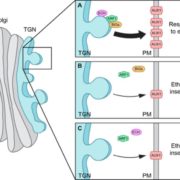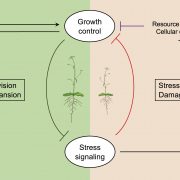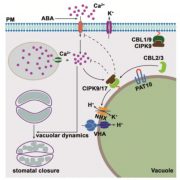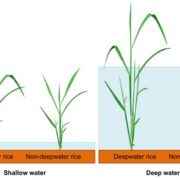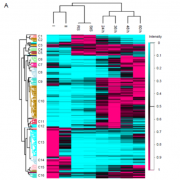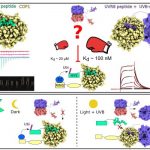Plasma membrane-associated receptor like kinases relocalize to plasmodesmata in response to osmotic stress (Plant Phys)
 Plasmodesmata are channels through the cell wall that allow molecules and substances to move back and forth as needed; they also play a central role in growth, development and defence of all higher plants. In this study, Grison et al. describe the rapid relocation to the plasmodesmata pores of two plasma membrane-located Leucine-Rich-Repeat Receptor-Like-Kinases (LRR-RLKs), QSK1 and IMK2, in response to osmotic stress; they also show that this is not a general feature of LRR-RLKs. In particular, exposure to NaCl or mannitol triggers the relocalization in a QSK1-phosphorylation dependent manner within less than 2 min. Plasmodesmata aperture is regulated in part by callose deposition and removal. Lateral root (LR) development is also associated with callose-mediated plasmodesmata regulation, and the authors show here that the callose levels in the qsk1 mutant are reduced. The authors conclude that QSK1 has an important function not only in LR development but is required also to regulate callose deposition in response to mannitol. (Summarized by Francesca Resentini) Plant Physiol. 10.1104/pp.19.00473
Plasmodesmata are channels through the cell wall that allow molecules and substances to move back and forth as needed; they also play a central role in growth, development and defence of all higher plants. In this study, Grison et al. describe the rapid relocation to the plasmodesmata pores of two plasma membrane-located Leucine-Rich-Repeat Receptor-Like-Kinases (LRR-RLKs), QSK1 and IMK2, in response to osmotic stress; they also show that this is not a general feature of LRR-RLKs. In particular, exposure to NaCl or mannitol triggers the relocalization in a QSK1-phosphorylation dependent manner within less than 2 min. Plasmodesmata aperture is regulated in part by callose deposition and removal. Lateral root (LR) development is also associated with callose-mediated plasmodesmata regulation, and the authors show here that the callose levels in the qsk1 mutant are reduced. The authors conclude that QSK1 has an important function not only in LR development but is required also to regulate callose deposition in response to mannitol. (Summarized by Francesca Resentini) Plant Physiol. 10.1104/pp.19.00473


